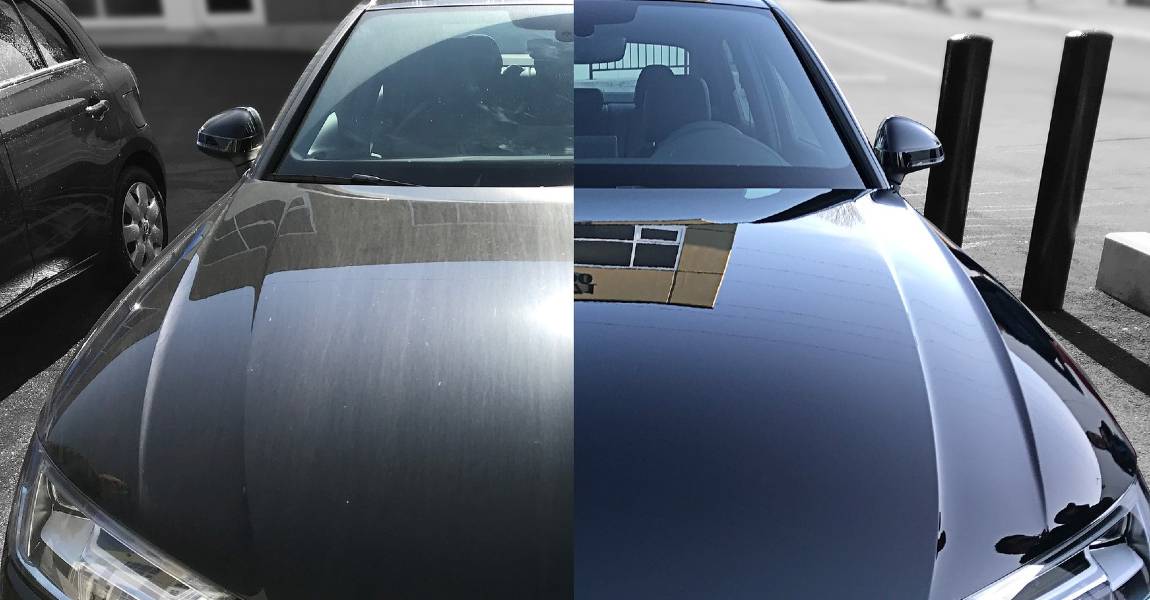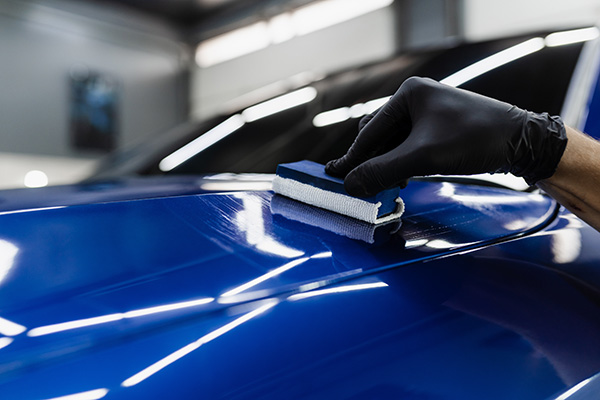Ceramic Coating vs. Sealants: Understanding the Distinctions for Your Car
Ceramic Coating vs. Sealants: Understanding the Distinctions for Your Car
Blog Article
The Relevance of Ceramic Coating: Protecting Your Cars and truck's Outside With Accuracy
In a period where keeping the aesthetic and useful honesty of your car is extremely important, ceramic covering arises as a crucial service. With its one-of-a-kind bonding properties, ceramic layer provides a degree of protection that far exceeds conventional waxing techniques.
Advantages of Ceramic Coating
When it comes to protecting a car's visual appeal, ceramic finish provides significant advantages. This innovative protective layer offers a sturdy guard against ecological pollutants, including dust, grime, and unsafe UV rays. By creating a semi-permanent bond with the car's paint, ceramic layers successfully stop oxidation and fading, making sure that the auto maintains a glossy, showroom-like coating for a prolonged duration. This not just enhances the car's aesthetic allure yet also adds to its long-term value.
In enhancement to its protective top qualities, ceramic layer offers exceptional hydrophobic buildings, triggering water and various other liquids to bead off effortlessly. This function streamlines the cleansing procedure, as dust and particles are much less likely to follow the surface, decreasing the frequency and initiative required for upkeep. The finish's resistance to chemical stains from acidic contaminants like bird droppings and tree sap is another notable benefit, decreasing potential paint damages.
Ceramic coatings also enhance scratch resistance, providing a layer that can absorb minor abrasions and swirl marks. This attribute is particularly useful in preserving a pristine surface, decreasing the possibility of noticeable flaws and protecting the stability of the car's paintwork in time.

Just How Ceramic Covering Functions
Recognizing the auto mechanics behind ceramic layer discloses its efficacy as a safety option for lorries. Ceramic finishings are essentially fluid polymer applications that chemically bond with an automobile's manufacturing facility paint, creating a protective layer. This layer functions as an obstacle against environmental impurities such as gunk, dirt, and ultraviolet rays, which can degrade an auto's exterior gradually. The crucial element in ceramic coating is silicon dioxide (SiO2), which stems from quartz crystals and is recognized for its phenomenal firmness and sturdiness.
Application of ceramic finish entails a careful procedure. This shield enhances the cars and truck's gloss and hydrophobic residential or commercial properties, assisting in easier cleansing by causing water and pollutants to grain and slide off easily.
Moreover, the layer's molecular structure supplies resistance to small scratches and chemical stains. Unlike waxes or sealers that sit on top of the paint, ceramic layers incorporate with the surface, providing lasting security. This integration is fundamental to its efficiency, making certain the lorry's finish stays beautiful for years.
Comparing Ceramic Coating to Alternatives
In the realm of automotive protection, ceramic coating stands as a formidable alternative when contrasted to traditional options such as sealants and waxes. While waxes provide a momentary shiny surface, generally lasting just a few weeks to months, ceramic coverings give a longer-lasting service, commonly withstanding for several years. This toughness is attributed to the chemical bonding that occurs when ceramic layers are applied, developing a solid layer that is resistant to ecological threats.
Contrastingly, sealers, although more resistant than waxes, still disappoint the durable defense supplied by ceramic coverings. Sealants can generally last for as much as a year, offering a synthetic guard versus certain elements. They do not have the remarkable hydrophobic residential properties and UV protection that ceramic coverings deliver.
Moreover, ceramic coatings offer improved scrape resistance, which neither waxes neither sealants can effectively match. In recap, while traditional waxes and sealers provide fundamental protection, ceramic finishings present a detailed, lasting service that significantly maintains the vehicle and improves's outside surface.
Application Process Described
Using ceramic finishing to an automobile needs a careful process to make certain optimal outcomes and sturdiness. The initial step entails extensively cleansing the auto's surface area to get rid of dust, grease, and previous waxes. This is essential for making certain the layer sticks properly. A pH-neutral hair shampoo and a clay bar therapy are frequently made use of to achieve an excellent surface area. Once cleansed, the car is dried and polished to remove any type of blemishes, as any existing scratches or swirls can become a lot more noticable after the coating is used.
Following surface area prep work, the application of the ceramic coating starts. Utilizing an applicator pad, the ceramic finish is applied in small areas to make certain even protection.
After application, the finish requires a particular curing period, throughout which the car must be protected from water and contaminants. This curing procedure can differ depending upon the product but typically varies from 24 to 2 days. Ultimately, this comprehensive procedure is crucial in attaining a shiny and resilient finish.
Upkeep Tips for Longevity
To keep the long life of a ceramic covering, adherence to a self-displined maintenance regimen is vital. Avoid automatic car washes, as their extreme brushes can webpage endanger the layer's honesty.
Post-wash, drying the car with a clean microfiber towel stops water places that may weaken the finishing over time. Additionally, use a ceramic coating booster every few months. These boosters find more information strengthen the hydrophobic homes and improve the covering's safety capacities, guaranteeing it continues to be reliable versus contaminants.
Keep in mind that car park areas play a critical role in maintenance. ceramic coating. Whenever feasible, park in shaded areas to decrease UV direct exposure, which can slowly deteriorate the finishing. For long-term storage, consider using a cars and truck cover for included security against environmental components
Conclusion
In conclusion, ceramic finishing serves as an essential safety layer for vehicle exteriors, using resilient protection versus ecological elements such as dirt, grime, and UV rays. Understanding the application procedure and sticking to upkeep suggestions are crucial for optimizing the longevity and performance of ceramic finishing.
When it comes to protecting a vehicle's aesthetic allure, ceramic coating supplies considerable benefits. By creating a semi-permanent bond with the lorry's paint, ceramic finishes efficiently prevent oxidation my sources and fading, guaranteeing that the car preserves a glossy, showroom-like surface for an extensive duration. Ceramic coverings are essentially liquid polymer applications that chemically bond with a cars and truck's factory paint, producing a safety layer. In recap, while traditional waxes and sealers supply standard security, ceramic coatings present a comprehensive, long-term solution that considerably boosts and maintains the automobile's outside surface.

Report this page